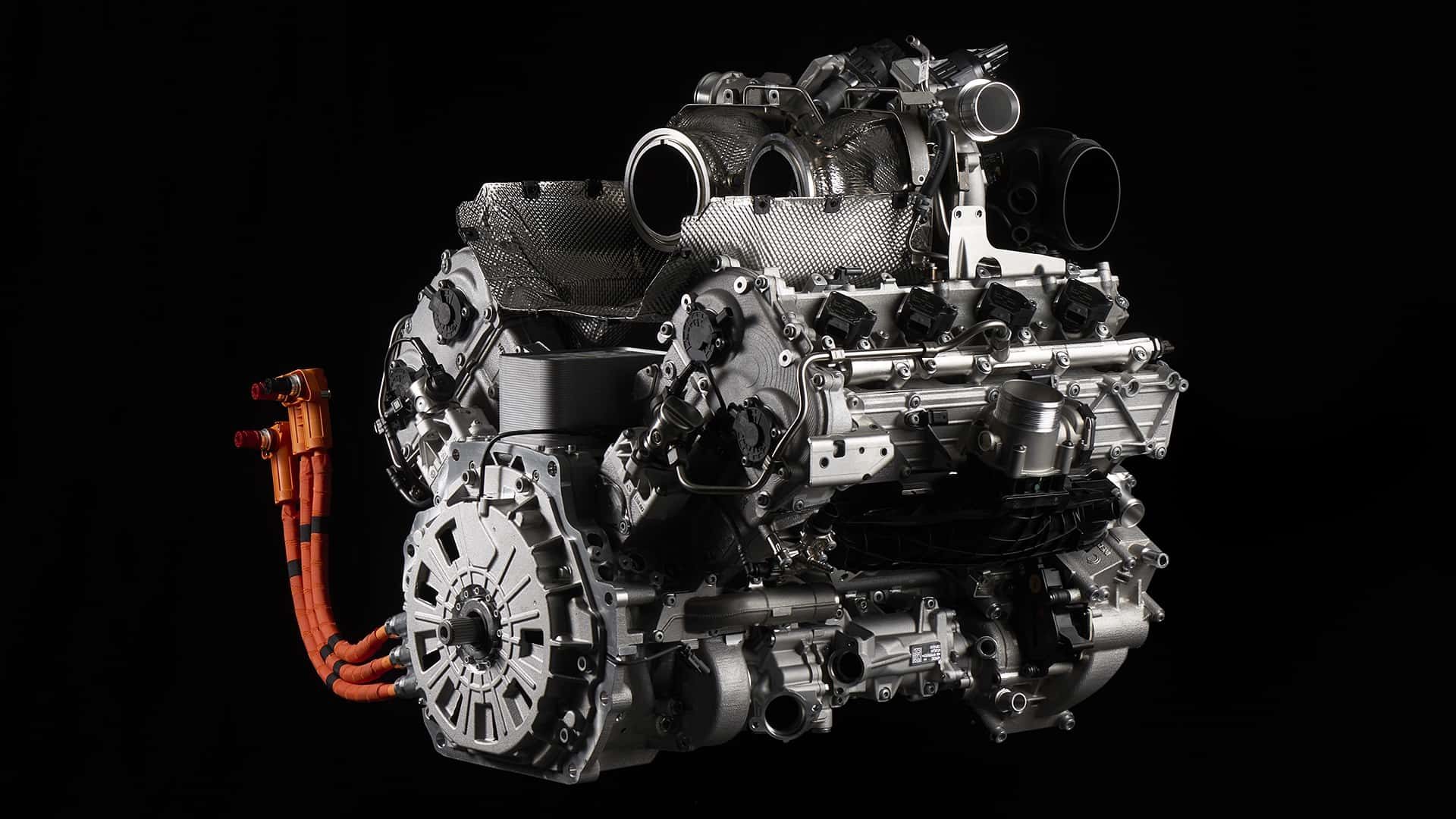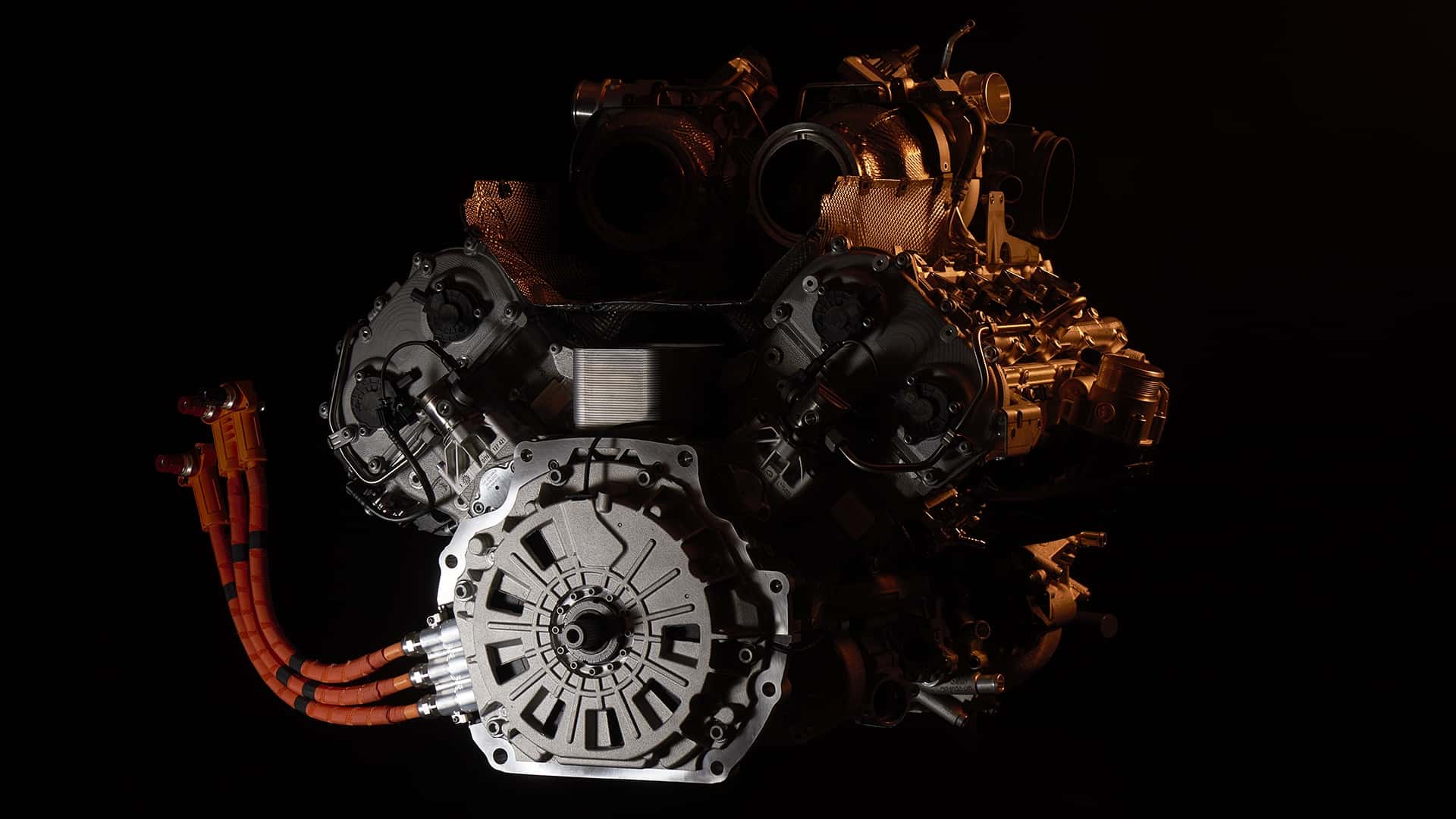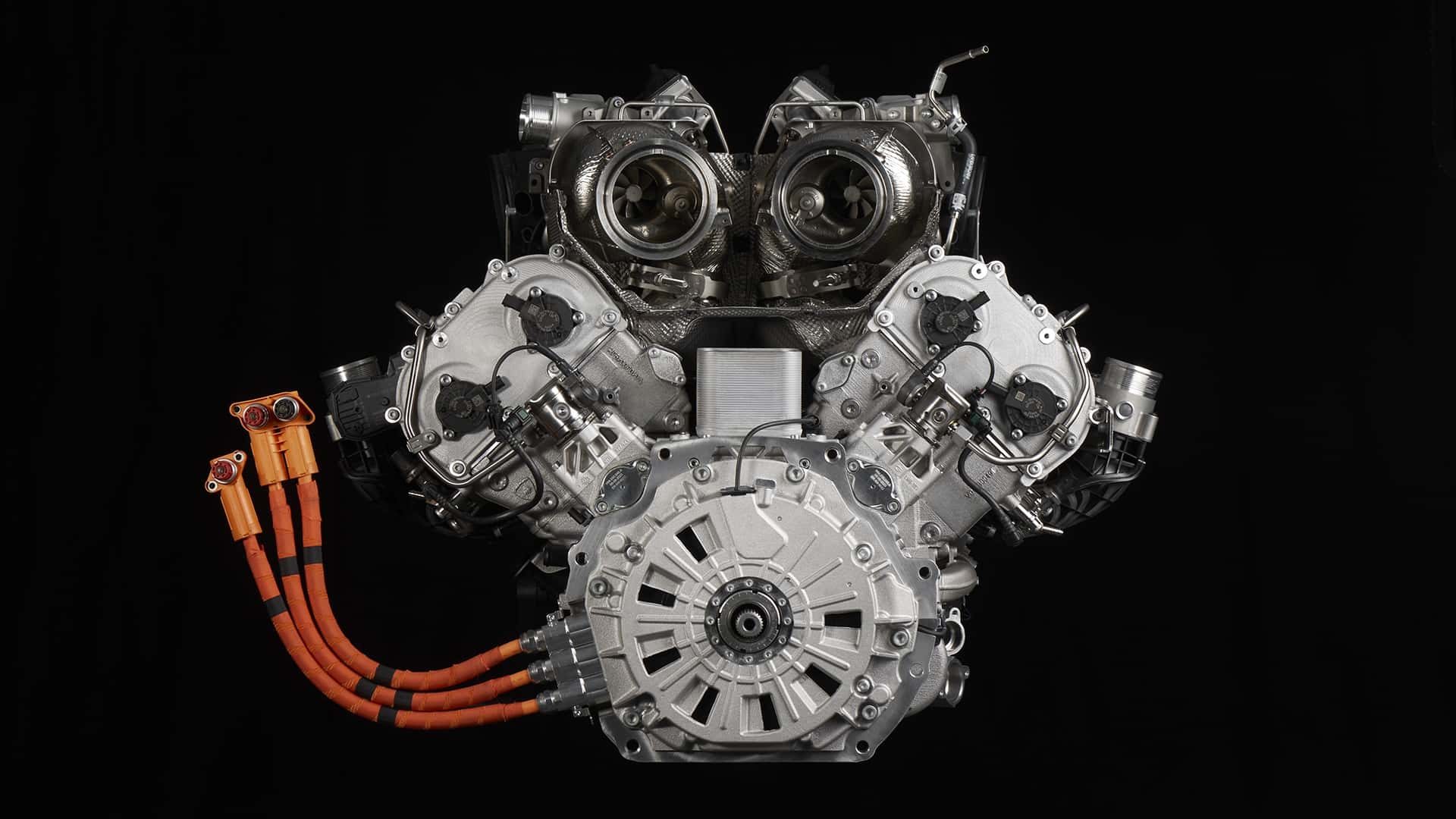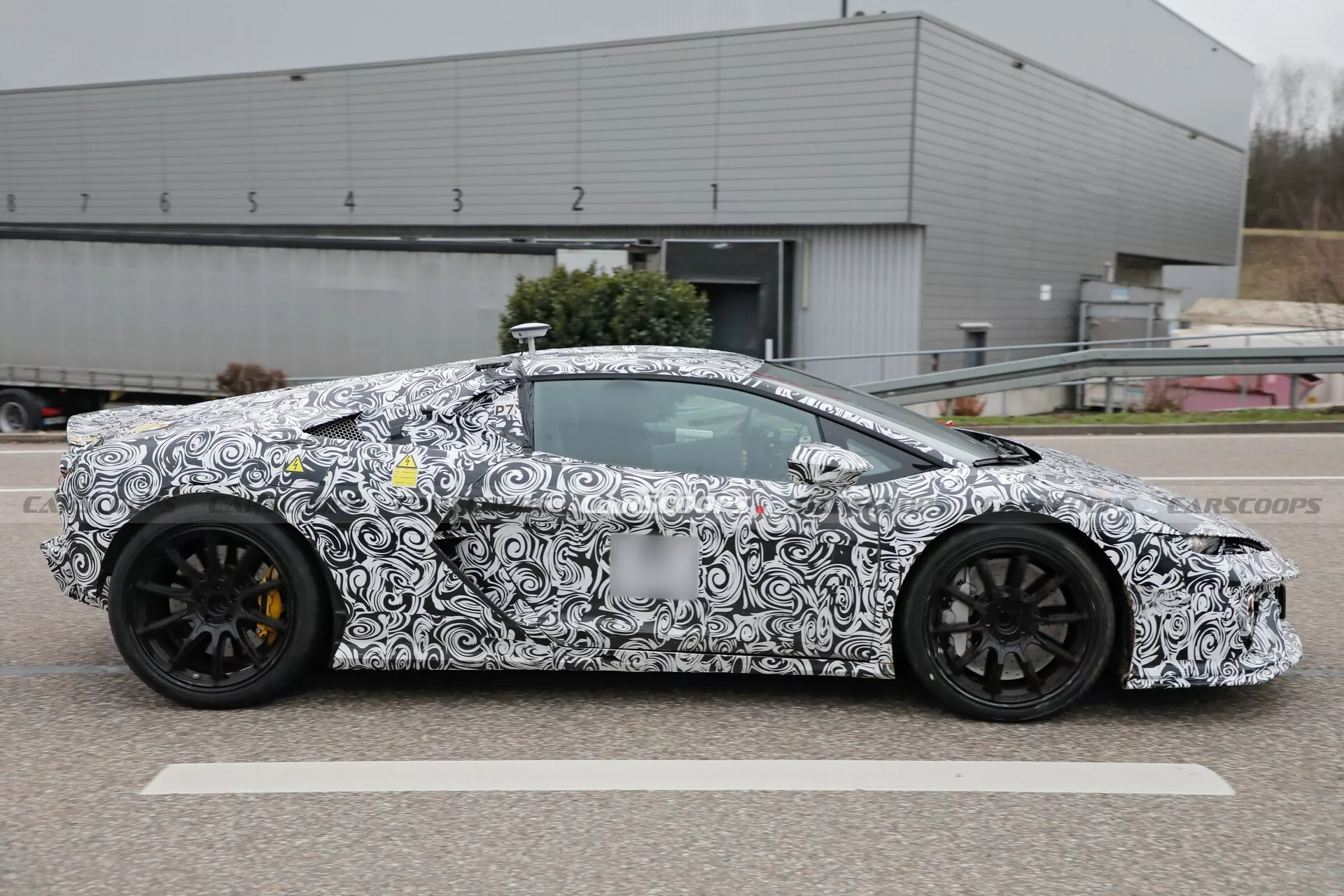The replacement for the Lamborghini Hurácan, likely to be known as the Temerario, will feature a screamer of an engine. It is one of the most potent and high-revving biturbo V8 mills ever designed for a production car. The Huracan successor will disrobe soon and is due for launch at the end of this year.

As suggested last month, the new supercar will have a plug-in hybrid powertrain, the core of which has now been detailed. It’s not a naturally aspirated mill but a twin-turbo 4.0-litre V8. It develops 588kW at 9000-9750rpm – the redline is 10,000rpm – and 798Nm from 4000-7000rpm. That dwarfs the output of the Hurácan SJO’s atmo V10 (470kW/565Nm).
And it promises to be the highest-revving V8 fitted to any existing production car. Only a few ultra-exclusive road-going hypercars have engines that rev higher.

This engine bears no relation to the 4.0L twin turbo V8 in the latest Urus; it is new and developed entirely by Lamborghini.
The firm promises a distinctive sound character and an “unparalleled driving experience”. Likely it uses a flat-plane crankshaft (lighter rotating mass) for the enhanced rev-ability.
Aiding the engine is an axial-flux electric motor integrated ahead of the eight-speed dual-clutch automatic gearbox. Its 110kW and 300Nm output feeds the rear axle. There are two motors on the front axle as well, similar to the Revuelto, though output from these is not yet known.
While no total system numbers are yet available either, expect power to exceed that of rivals Artura and 296GTB.

The Huracan successor, code-named 634 at present, is likely have a compact li-ion battery housed in the transmission tunnel for optimal weight distribution.
Lamborghini says to expect better dynamic behaviour from the Huracan successor because the electric motor facilitates active torque vectoring.

Visually, the new supercar will exhibit styling cues from Revuelto. Expect a ‘spaceship’ silhouette, a gaping hexagonal exhaust, Y-shaped LED light designs and air channels through the body to enhance downforce. It will likely feature a monocoque monofuselage structure similar to Revuelto’s, permitting electrification, though with more aluminium than expensive composites. The backbone will presumably be CF. A shorter platform is likely too.
Lamborghini will assemble the new supercar on the same production line as the Revuelto, suggesting the sharing of major architectural and electrical items.


